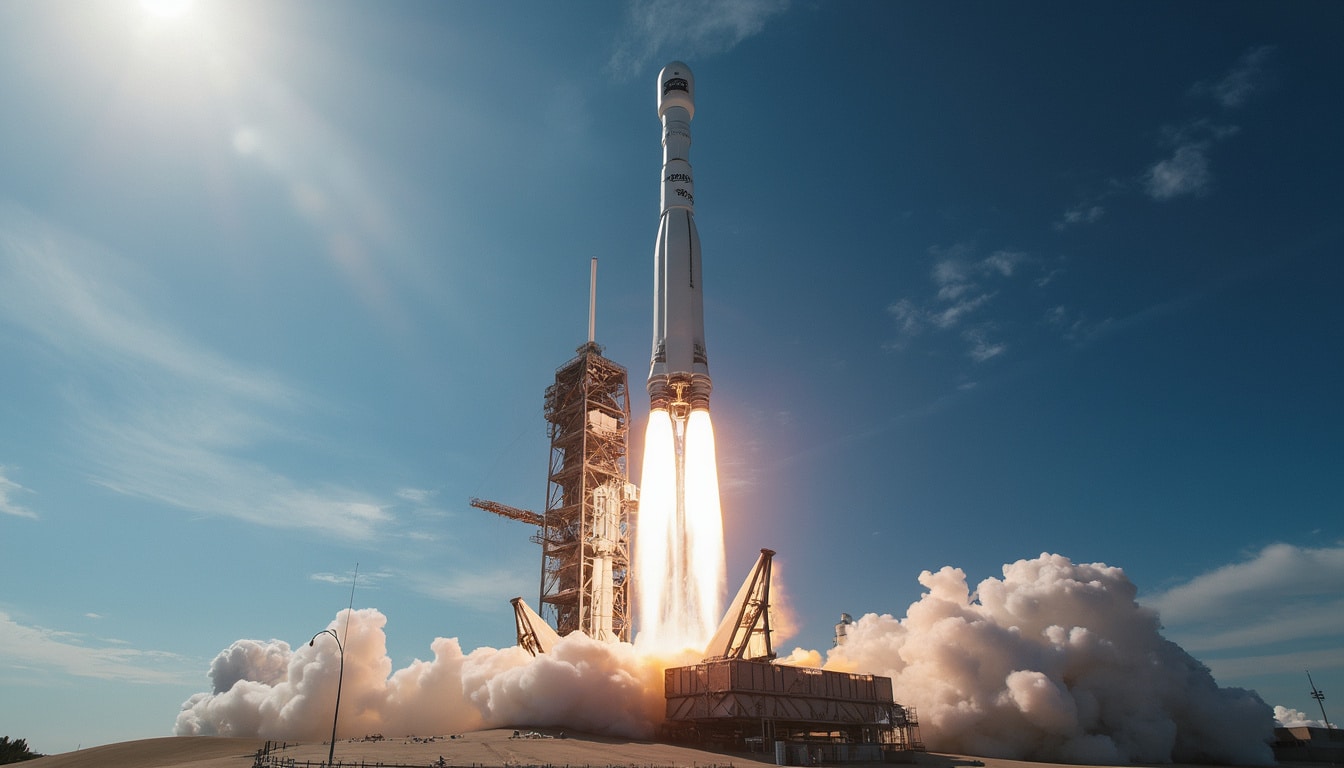The race for dominance in the satellite internet sector has intensified with Amazon’s recent launch of its first batch of internet satellites, part of its ambitious Project Kuiper. With a payload of 27 satellites, Amazon takes a significant step towards establishing its place alongside SpaceX’s Starlink, which has already deployed thousands of satellites to deliver broadband service globally. This endeavor reflects not just competition but a deeper push for innovation in aerospace and telecommunications, aiming to bridge the connectivity gap in underserved regions worldwide.
Launched from Cape Canaveral Space Force Station using a United Launch Alliance Atlas V rocket, these satellites are designed to reach an operational altitude of 400 miles, significantly enhancing broadband access globally. This step marks the beginning of what could be a tremendous buildout of a new satellite constellation, potentially involving over 3,200 satellites. Amazon’s late entry into this competitive arena, dominated by Elon Musk’s SpaceX and its extensive array of Starlink satellites, reveals the escalating stakes in providing reliable internet service.
The Launch of Project Kuiper: Setting the Stage
Amazon’s journey into satellite internet began with an ambitious goal: to enable fast and affordable internet access worldwide through a network of satellites. Project Kuiper, named after the Kuiper Belt beyond Neptune, aims to leverage the latest technologies to provide high-speed internet where terrestrial service is either insufficient or unavailable.

The Technical Specifications of Project Kuiper Satellites
Each of the 27 satellites launched is equipped with advanced technology designed for optimal performance. The satellites are coated in a reflective material that helps mitigate their visibility from the ground, addressing concerns from astronomers about light pollution. This innovative approach sets them apart from traditional satellites. With a planned deployment altitude of 400 miles, they will operate within a medium Earth orbit, balancing coverage and minimizing interference with astronomical observations.
Amazon’s approach also includes extensive testing and validation of its technology. Recent upgrades to the satellite design, including improved signal processing capabilities and enhanced power management systems, showcase the company’s commitment to delivering a robust internet service. By investing in a rapid deployment strategy, Amazon aims to catch up with SpaceX’s already extensive Starlink network.
The Competition: Amazon vs. SpaceX’s Starlink
Given that SpaceX has over 8,000 Starlink satellites already in orbit, Amazon’s entry brings a fresh competitive edge to an industry that is evolving rapidly. SpaceX’s consistent launches have made it a leader in the satellite internet market, servicing millions of users worldwide. As Amazon begins its satellite deployments, the dynamics of this competition are bound to shift, prompting both companies to innovate continuously.
SpaceX’s Starlink Achievements
With consistent successful launches since 2019, SpaceX has established itself as a reliable provider of satellite internet. Recent launches have showcased their ability to deploy large batches of satellites quickly, meeting the growing demand for broadband connectivity. The 250th Starlink launch is a testament to their capability to maintain a leading position in this lucrative field.
However, the introduction of Amazon’s satellites may compel SpaceX to accelerate its plans or expand its offerings to remain competitive. Cordial competition could ultimately benefit consumers, providing more options for internet service and possibly driving down prices.
Challenges and Opportunities in Satellite Internet Expansion
Both Amazon and SpaceX face a myriad of challenges as they expand their satellite internet services. Concerns regarding space debris and potential collisions have been raised by astronomers and stakeholders in the space industry. The increasing number of satellites in orbit raises questions about sustainability and the responsible use of space.
Amazon, with its substantial resources, is in a position to innovate while mitigating these risks. By addressing the concerns of astronomers through design choices, such as the reflective coatings on their satellites, Amazon demonstrates a willingness to collaborate with the scientific community. This partnership may help ease tensions between satellite companies and those who rely on unobstructed night skies for research and enjoyment.
Future Prospects for Satellite Internet
The future of satellite internet looks promising, with both companies poised to fulfill a growing need for connectivity in various parts of the world. The focus on underserved regions offers tremendous growth potential for both Amazon and SpaceX’s broadband services. This creates an opportunity to bridge the digital divide and provide opportunities for education, business, and healthcare in remote areas.
The deployment of satellite constellations represents not only technological advancement but also a shift in how we perceive and interact with the internet. As conventional ISPs face challenges in rural connectivity, satellite networks present an alternative that is both scalable and efficient.
Regulatory Landscape and Its Impact
The regulatory landscape for satellite internet is complex and evolving. Companies like Amazon and SpaceX must navigate various governmental policies, international agreements, and spectrum allocations to establish their services. FAA regulations and international standards play significant roles in determining when and how satellites can be launched and operated.
Impact of FCC Regulations
The Federal Communications Commission (FCC) is instrumental in shaping the satellite internet landscape in the United States. By approving spectrum allocations for satellite communication, they influence how companies deploy their systems. Both companies must also contend with international regulations and alliances as they expand their services globally.
The influx of new satellite constellations raises crucial questions about the sustainability of space and the long-term effects of an increasingly crowded orbital environment. Balancing innovation with responsible practices will be essential for the future success of satellite internet initiatives.
| Company | Satellites Launched | Operational Altitude (miles) | Launch Provider |
|---|---|---|---|
| Amazon | 27 (initial batch) | 400 | United Launch Alliance |
| SpaceX | Over 8,000 | 300+ | SpaceX Falcon 9 |
In a fast-paced industry characterized by frequent developments, both Amazon and SpaceX will need to remain agile, prepared to adapt to new challenges and opportunities in the satellite internet landscape. As they each make their mark on this domain, the potential benefits for consumers and global connectivity are profound.




Leave a Reply